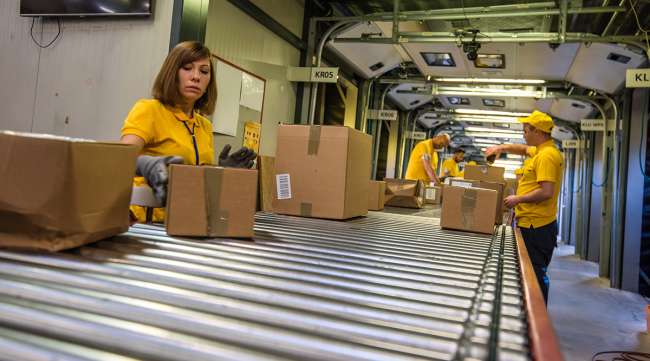Fulfillment Centers Moving Closer to Consumers

The growth in e-commerce is driving up demand for smaller industrial spaces nearer to cities so fulfillment firms can quickly get their products to customers, but it remains to be seen if fulfillment centers will start operating in suburban neighborhoods.
A recent study from real estate services firm JLL found that leasing demand in 2017 for industrial property — warehouses and fulfillment and distribution centers — grew in the small- to midsize-square-foot categories and away from the giant spaces. JLL concluded that companies are “pushing into the ‘last mile’ to be closer to consumers in more cities.”
For instance, properties leased or rented in the 250,000- to 499,000-square-foot category grew to be 32% of the market, up from 20% in the fourth quarter of 2016. And properties in the 100,000- to 249,000-square-foot category accounted for 41% of the industrial property market, up from 38%.
We’re seeing more supply chain nodes spread across the country. They are smaller in size but greater in number.
Aaron Ahlburn, JLL managing director of industrial and logistics research
In contrast, demand for properties greater than 1 million square feet fell to 7% from 13% a year ago, and properties in the 750,000- to 999,000-square-feet category accounted for 9% of market in the fourth quarter, down from 16% a year ago.
“This phenomenon has been talked about, but it has manifested itself in the last year or two,” said Aaron Ahlburn, JLL’s managing director of industrial and logistics research. “[Companies are making] attempts at new delivery standards. We’re seeing more supply chain nodes spread across the country. They are smaller in size but greater in number.”
This trend is occurring in tandem with the rise in e-commerce sales. In last year’s third quarter, e-commerce jumped 15.5% compared with the same period in 2016 and accounted for more than 9% of total retail sales, the U.S. Census Bureau reported.
Companies understand they’ve got to be closer to their customers.
Jerry McDonald, Geodis senior vice president
Geodis, a Brentwood, Tenn.-based supply chain specialist for merchants, has seen customers changing their approach to distribution.
“We have several customers with a single location. They are now executing plans to go to a distributed model with two, three or more locations,” Geodis Senior Vice President Jerry McDonald said. “You’ve got to keep up with Amazon, which has about 300 buildings. Companies understand they’ve got to be closer to their customers.”
But competition for a great location is fierce. The industrial space market has seen 24 consecutive quarters of rent growth, according to CBRE. The commercial real estate giant found that prices for industrial plots of 5 to 10 acres “often suited for construction of smaller, infill distribution centers in urban or suburban settings” increased about 25% to $250,000 per acre in 2017.
Regional less-than-truckload carrier A. Duie Pyle Inc. took the plunge in New York City, building a 33,366-square foot, 77-door service center in the Bronx, where e-commerce will be a part of its focus. Pyle owns the facility and has a long-term land lease in place.
“The new service center allows us to provide our current and future customers with unique transportation options in New York, expand Pyle’s expedited service capabilities in the area and develop quality capability throughout the busiest and most dense region in the U.S.,” Chief Operating Officer Randy Swart said.
Th carrier also owns a facility with land in Queens that it plans to operate as a second service center for New York City and Long Island.
A. Duie Pyle ranks No. 78 on the Transport Topics Top 100 list of for-hire carriers in North America.
E-commerce fulfillment centers have different needs than warehouses for brick-and-mortar merchants. In general, e-commerce merchants require more space and up to three times as many employees because of the need to have more inventory on hand that will be handled, or “picked and packed,” by the staff, according to Armstrong & Associates. That translates into higher ceilings to accommodate taller shelving, enhanced load bearing capabilities, greater energy needs, space to handle returns and a larger parking lot for employees, the third-party logistics consulting and market research firm said.
The interest in locating fulfillment centers close to end-point purchasers hasn’t translated into the long-predicted conversion of shopping malls into distribution centers. Real estate experts say the idea of repurposing a near-empty mall may have sound good on the surface, but the mechanics of converting such a property is quite complicated.
For example, changing the use of a building from retail to industrial may require zoning changes, and a distribution center may not generate the taxes that a mall does, said David Egan, global head of industrial and logistics research with CBRE. Combine that drop with an increase in truck traffic, and you could see local community opposition. Further, the remaining retailers could have long-term leases that they refuse to break, and any conversion may take an investment in structural changes, he said.
“A lot of people have to agree on it,” Egan said. “You have to go a long way to make it actually happen.”



